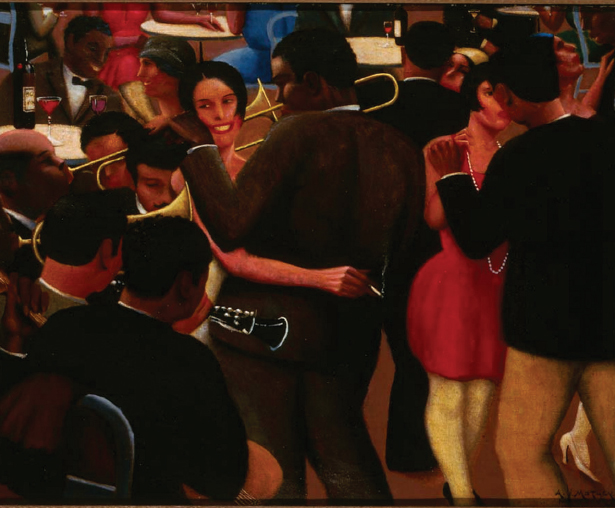America’s History: Printed Page 669
America: A Concise History: Printed Page 609
America’s History: Value Edition: Printed Page 591
Modernity and Its Discontents
 Art Institute of Chicago.
Art Institute of Chicago.
World War I had a powerful domestic impact in the United States. The Great Migration brought African Americans northward, and Mexicans across the U.S. border, to take up wartime jobs. A full-blown modern consumer culture also emerged by the 1920s as radio, cars, and Hollywood movies transformed leisure pastimes. While many Americans embraced consumer culture, others expressed deep fear and antagonism toward a new modern sensibility, especially secularism and sexual freedoms. Repressive impulses also came from above; during World War I, the federal government introduced new laws to police dissent, and the country took a sharp right turn. A Red Scare, rollback of labor and immigrant rights, and rising nativism marked the political scene. A resurgent nationwide Klan arose to target Catholics and Jews as well as African Americans. Many cultural conflicts emerged: the teaching of evolution in the schools angered religious fundamentalists, while “wets” and “drys” debated the prohibition of liquor.
Later events showed that racism took many forms: the U.S. government deported hundreds of thousands of people of Mexican descent during the Great Depression, including American citizens, and temporarily imprisoned Japanese Americans in a mass relocation policy during World War II. These, too, represented battles over what a diverse, modern nation would look like. We explore these conflicts in Chapters 21, 22, and 24.